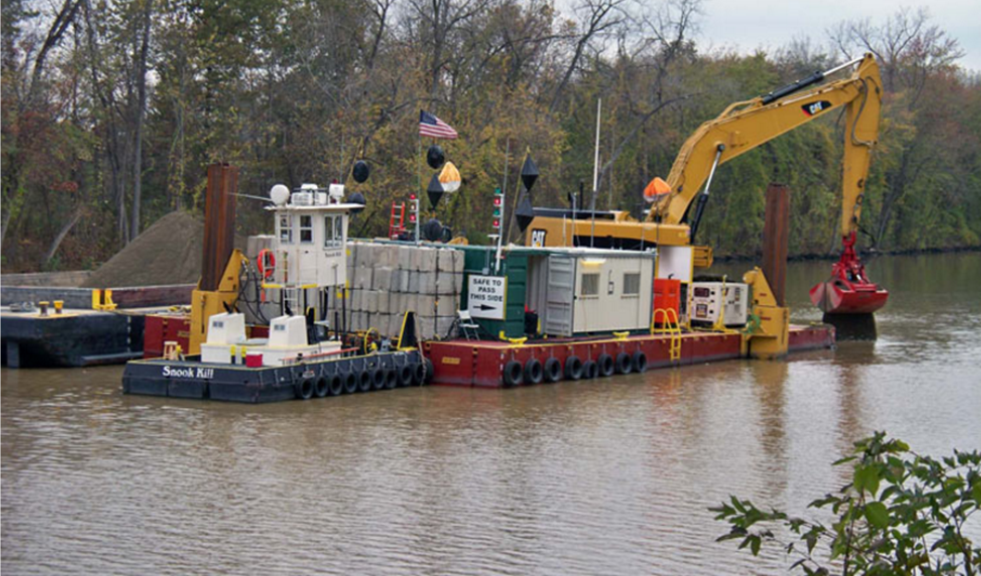Guest Speaker - Max Martin
On March 30th Clarkson alumni Max Martin from Ecology & Environment joined NYWEA and TXA (the environmental honor society) members in the Adirondack lodge to talk about his work remediating the Hudson River superfund site. The site was contaminated for three decades with the dumping of polychlorinated biphenyls, or PCBs from two General Electric (GE) capacitor manufacturing plants in Fort Edward and Hudson Falls, NY. The clean-up of the site was funded and carried out by GE; and Mr. Martin worked on behalf of the EPA to help communicate clean up methods, progress, and data. Covering 200 miles of the river, the project is one of the largest superfund projects in the nation.
Mr. Martin presented on the sampling program, and data analysis that took place, which gave students an idea of the project's scope. The sampling procedure broke the river into quadrants based on sampling cores taken. Back at the lab, testing was done from the top down to identify how deep the contamination was in each quadrant of the river. Computer programs also took into account river sediment deposition areas to analyze where PCBs would most likely have landed. Another key place where PCBs collected in the river was behind dams in the upper Hudson. Most of the PCBs were initially trapped behind Fort Edward dam until it’s destruction in 1973, which moved the contamination down river. In addition to spreading contamination, pieces of the dam would later make it impossible to use hydraulic dredging techniques. Manual dredging was used, which entails running an excavator with an environmental bucket on the river. Material is loaded into shipping containers which must be moved to a processing facility when full. The project was completed in 2015.
Another topic Mr. Martin talked about was the use of adaptive management on this project. For college students which are accustomed to constantly changing and adjusting in order to best solve problems, this seems common sense. However, when working with governments, and design engineers, change is often seen as costly and contrary to the project goals. The adaptive management style uses 6 cyclic steps: Assess, Plan, Implement, Monitor, Evaluate, and Adjust. Taking these steps made the project runs smoother when a problem was encountered, and allowed for it to be solved faster. One example given was the use of robotic buoys as opposed to sending someone to take grab samples. After noticing data was skewed for one site, adaptive management was used to quickly implement the use of a different buoy
By Sam Cash, edited by Sonja Gagen
